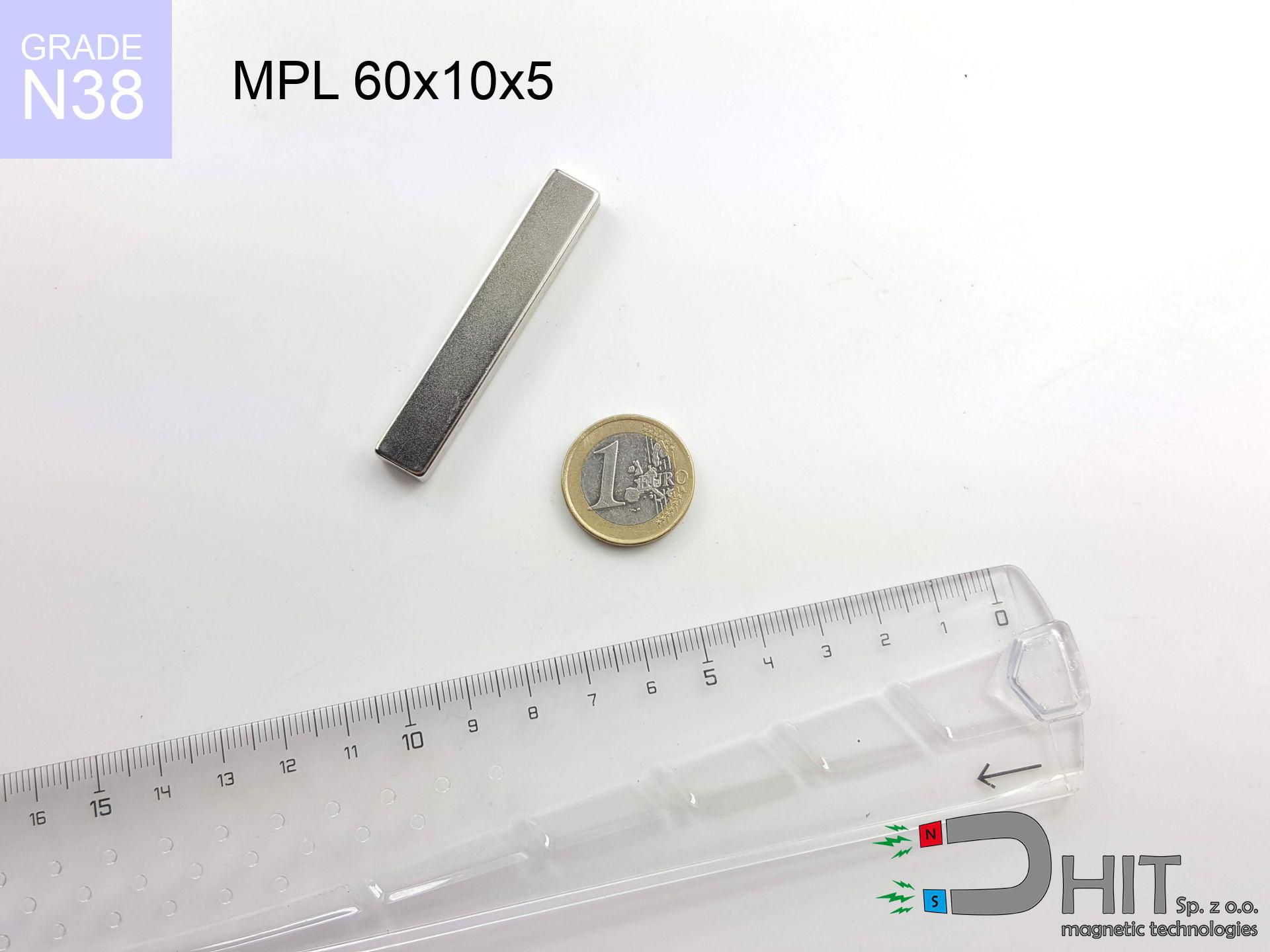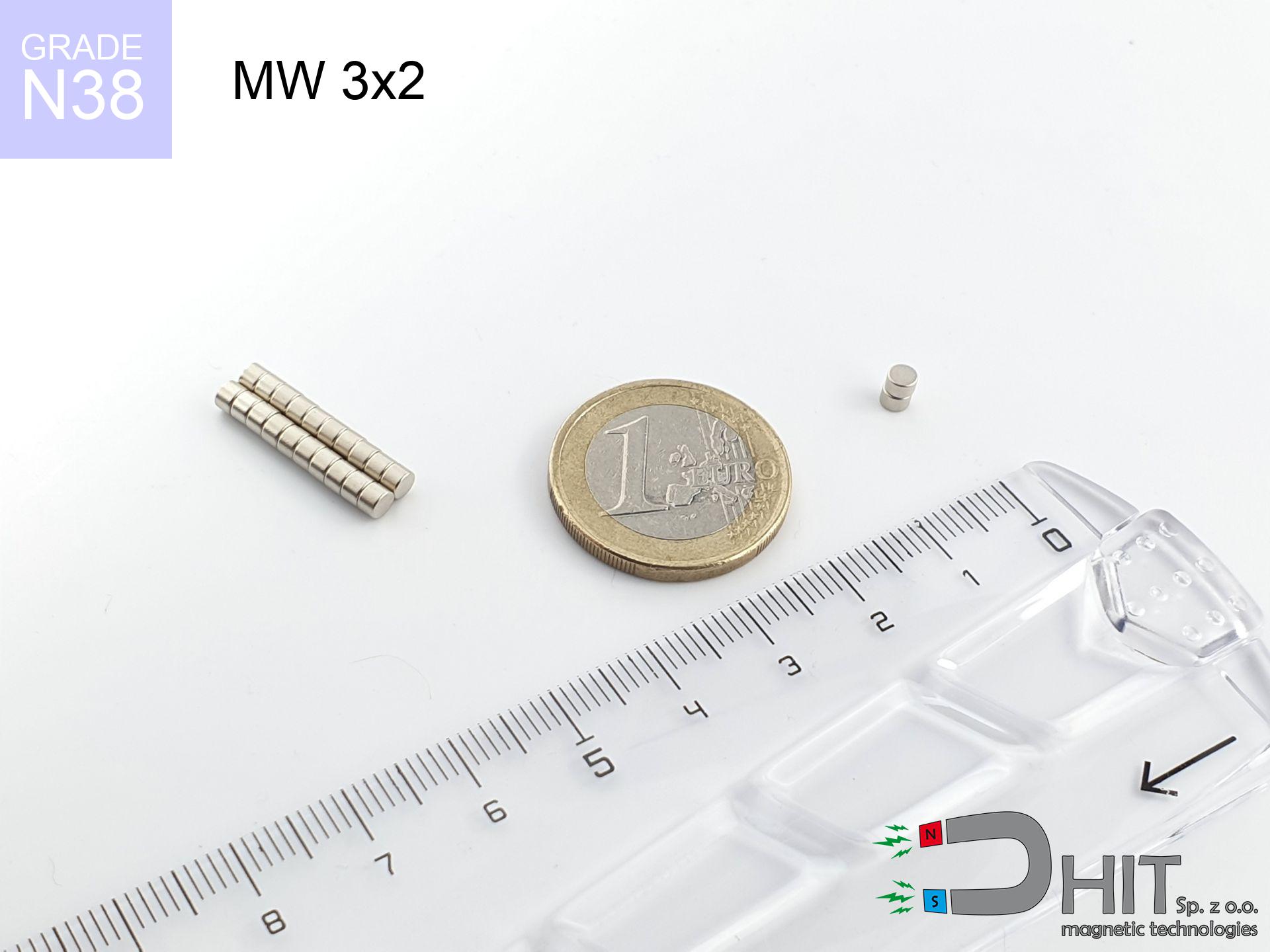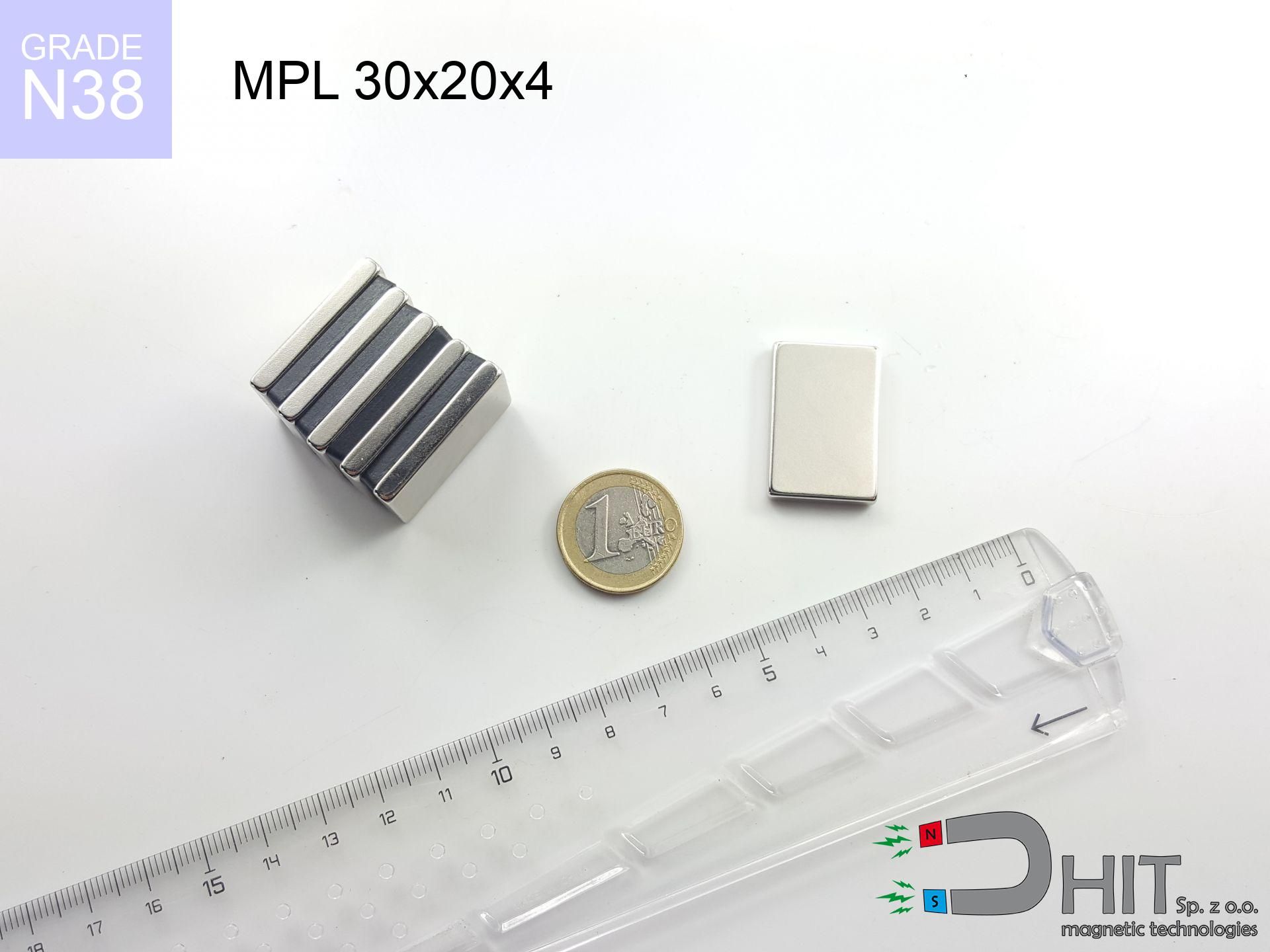UMP 107x40 [M8+M10] GW F 400 kg / N38 - search holder
search holder
Catalog no 210338
GTIN/EAN: 5906301813972
Diameter Ø
107 mm [±1 mm]
Height
40 mm [±1 mm]
Weight
2350 g
Load capacity
480.00 kg / 4707.19 N
Coating
[NiCuNi] Nickel
Magnetic Flux
~ 10 000 Gauss [±5%]
400.00 ZŁ with VAT / pcs + price for transport
325.20 ZŁ net + 23% VAT / pcs
bulk discounts:
Need more?
Pick up the phone and ask
+48 888 99 98 98
alternatively send us a note through
our online form
the contact form page.
Force along with form of a neodymium magnet can be verified using our
online calculation tool.
Orders placed before 14:00 will be shipped the same business day.
💡 Check why professionals choose Dhit over cheap substitutes
Instead of believing fairy tales on YouTube with tests on uncertified equipment, see what really determines your magnet's power:
- 📏 Magnet thickness in the casing (min. 10mm) – This is what matters most! Thin magnets are weak. Thanks to the 1cm thickness of N52 neodymium, your magnet "sees" metal even through thick rust and mud.
- 🛡️ Armored protection (Black Epoxy) – Forget about rust. This coating doesn't chip when hitting rocks and protects the magnet in water much better than regular nickel, which fails quickly.
- 🧲 Eyelets that don't steal power – Made of special non-magnetic steel, so they don't stick to the magnet and don't block the force. Important: mount only one eyelet at a time! Using 3 at once is a mistake that weakens the magnet.
- 🧶 Certified rope (min. 8mm) – You gain the certainty that your gear won't stay at the bottom. It's thick and comfortable, so it doesn't cut your fingers when pulling out heavy scrap metal.
- 🚀 Our advantage: We are the only ones combining the strongest N52 neodymium (10mm thick) with non-magnetic eyelets. This is real power and durability you won't find anywhere else.
Invest in solid equipment and enjoy the results!
Physical properties - UMP 107x40 [M8+M10] GW F 400 kg / N38 - search holder
Specification / characteristics - UMP 107x40 [M8+M10] GW F 400 kg / N38 - search holder
| properties | values |
|---|---|
| Cat. no. | 210338 |
| GTIN/EAN | 5906301813972 |
| Production/Distribution | Dhit sp. z o.o. |
| Country of origin | Poland / China / Germany |
| Customs code | 85059029 |
| Diameter Ø | 107 mm [±1 mm] |
| Height | 40 mm [±1 mm] |
| Weight | 2350 g |
| Load capacity ~ ? | 480.00 kg / 4707.19 N |
| Coating | [NiCuNi] Nickel |
| Holder Type | 2 sided |
| Material Type | Structural steel S235 (ferrous) |
| Magnetic Flux | ~ 10 000 Gauss [±5%] |
| Size/Mount Quantity | 2xM8/1xM10 |
| Manufacturing Tolerance | ±1 mm |
Magnetic properties of material N38
| properties | values | units |
|---|---|---|
| remenance Br [min. - max.] ? | 12.2-12.6 | kGs |
| remenance Br [min. - max.] ? | 1220-1260 | mT |
| coercivity bHc ? | 10.8-11.5 | kOe |
| coercivity bHc ? | 860-915 | kA/m |
| actual internal force iHc | ≥ 12 | kOe |
| actual internal force iHc | ≥ 955 | kA/m |
| energy density [min. - max.] ? | 36-38 | BH max MGOe |
| energy density [min. - max.] ? | 287-303 | BH max KJ/m |
| max. temperature ? | ≤ 80 | °C |
Physical properties of sintered neodymium magnets Nd2Fe14B at 20°C
| properties | values | units |
|---|---|---|
| Vickers hardness | ≥550 | Hv |
| Density | ≥7.4 | g/cm3 |
| Curie Temperature TC | 312 - 380 | °C |
| Curie Temperature TF | 593 - 716 | °F |
| Specific resistance | 150 | μΩ⋅cm |
| Bending strength | 250 | MPa |
| Compressive strength | 1000~1100 | MPa |
| Thermal expansion parallel (∥) to orientation (M) | (3-4) x 10-6 | °C-1 |
| Thermal expansion perpendicular (⊥) to orientation (M) | -(1-3) x 10-6 | °C-1 |
| Young's modulus | 1.7 x 104 | kg/mm² |
Chemical composition
| iron (Fe) | 64% – 68% |
| neodymium (Nd) | 29% – 32% |
| boron (B) | 1.1% – 1.2% |
| dysprosium (Dy) | 0.5% – 2.0% |
| coating (Ni-Cu-Ni) | < 0.05% |
Environmental data
| recyclability (EoL) | 100% |
| recycled raw materials | ~10% (pre-cons) |
| carbon footprint | low / zredukowany |
| waste code (EWC) | 16 02 16 |
See more products
Pros and cons of rare earth magnets.
Advantages
- They virtually do not lose power, because even after ten years the performance loss is only ~1% (in laboratory conditions),
- Neodymium magnets remain highly resistant to demagnetization caused by external magnetic fields,
- In other words, due to the smooth layer of nickel, the element looks attractive,
- Magnets are distinguished by extremely high magnetic induction on the outer side,
- Neodymium magnets are characterized by very high magnetic induction on the magnet surface and can function (depending on the form) even at a temperature of 230°C or more...
- Possibility of detailed shaping and adapting to complex requirements,
- Huge importance in high-tech industry – they are commonly used in magnetic memories, electromotive mechanisms, diagnostic systems, also modern systems.
- Relatively small size with high pulling force – neodymium magnets offer impressive pulling force in small dimensions, which allows their use in small systems
Limitations
- They are fragile upon too strong impacts. To avoid cracks, it is worth protecting magnets in a protective case. Such protection not only protects the magnet but also increases its resistance to damage
- Neodymium magnets demagnetize when exposed to high temperatures. After reaching 80°C, many of them experience permanent weakening of strength (a factor is the shape and dimensions of the magnet). We offer magnets specially adapted to work at temperatures up to 230°C marked [AH], which are extremely resistant to heat
- Due to the susceptibility of magnets to corrosion in a humid environment, we recommend using waterproof magnets made of rubber, plastic or other material stable to moisture, when using outdoors
- We recommend cover - magnetic mount, due to difficulties in creating nuts inside the magnet and complicated shapes.
- Possible danger related to microscopic parts of magnets are risky, in case of ingestion, which gains importance in the context of child health protection. Furthermore, small components of these devices are able to disrupt the diagnostic process medical after entering the body.
- Due to neodymium price, their price is higher than average,
Holding force characteristics
Detachment force of the magnet in optimal conditions – what contributes to it?
- with the contact of a sheet made of low-carbon steel, guaranteeing full magnetic saturation
- with a cross-section of at least 10 mm
- with an ground touching surface
- with total lack of distance (without impurities)
- during pulling in a direction perpendicular to the mounting surface
- at ambient temperature approx. 20 degrees Celsius
Lifting capacity in real conditions – factors
- Gap (betwixt the magnet and the plate), as even a tiny distance (e.g. 0.5 mm) leads to a decrease in force by up to 50% (this also applies to varnish, rust or debris).
- Force direction – catalog parameter refers to detachment vertically. When attempting to slide, the magnet holds significantly lower power (often approx. 20-30% of maximum force).
- Base massiveness – too thin plate causes magnetic saturation, causing part of the power to be wasted to the other side.
- Metal type – not every steel attracts identically. Alloy additives worsen the interaction with the magnet.
- Surface finish – full contact is possible only on polished steel. Any scratches and bumps create air cushions, weakening the magnet.
- Thermal conditions – NdFeB sinters have a negative temperature coefficient. At higher temperatures they are weaker, and in frost gain strength (up to a certain limit).
Lifting capacity testing was performed on a smooth plate of suitable thickness, under a perpendicular pulling force, however under shearing force the load capacity is reduced by as much as fivefold. In addition, even a slight gap between the magnet’s surface and the plate decreases the load capacity.
Precautions when working with NdFeB magnets
Do not overheat magnets
Control the heat. Heating the magnet above 80 degrees Celsius will destroy its properties and pulling force.
Powerful field
Use magnets with awareness. Their huge power can surprise even professionals. Plan your moves and respect their force.
Dust explosion hazard
Fire hazard: Neodymium dust is highly flammable. Avoid machining magnets without safety gear as this may cause fire.
Metal Allergy
Some people suffer from a hypersensitivity to nickel, which is the standard coating for NdFeB magnets. Prolonged contact may cause skin redness. We recommend use protective gloves.
Bodily injuries
Risk of injury: The attraction force is so great that it can cause blood blisters, pinching, and broken bones. Use thick gloves.
Keep away from computers
Data protection: Neodymium magnets can ruin data carriers and sensitive devices (pacemakers, hearing aids, timepieces).
Swallowing risk
Only for adults. Tiny parts can be swallowed, leading to intestinal necrosis. Keep away from kids and pets.
Magnetic interference
A strong magnetic field negatively affects the functioning of compasses in phones and navigation systems. Keep magnets close to a smartphone to prevent damaging the sensors.
Eye protection
NdFeB magnets are sintered ceramics, which means they are prone to chipping. Clashing of two magnets will cause them shattering into small pieces.
Pacemakers
Medical warning: Strong magnets can turn off heart devices and defibrillators. Do not approach if you have medical devices.

![Fishing magnet UMP 107x40 [M8+M10] GW F 400 kg / N38 - GOLD Series Fishing magnet UMP 107x40 [M8+M10] GW F 400 kg / N38 - GOLD Series](https://cdn3.dhit.pl/graphics/banners/magnet.webp)
![UMP 107x40 [M8+M10] GW F 400 kg / N38 - search holder](https://cdn3.dhit.pl/graphics/products/ump107x40-m8+m10-gw-f-400-kg-mup.jpg)





